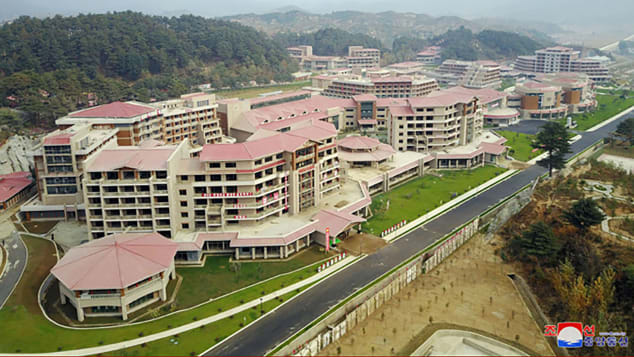Part
01
of two
Part
01
How does North Korea promote itself as a tourist destination?
Key Takeaways
- North Korean leader Kim Jong Un visits important attractions in the country, in order to gain press coverage and promote tourism.
- Kim ordered his top admirals to dress in bathing suits and swim 10 kilometers around Wonsan bay, as state TV filmed it. He sat at a desk on the sand. Wonsan is a small city and tourist hot spot.
- From 2019, North Korea has had plans to branch into medical tourism starting in 2020. It wants to combine oriental and western medicine with spa and spring treatments in order to attract Chinese tourists in particular.
Introduction
In this report, we outline two key ways North Korea has been encouraging tourists to visit and promoting its local tourism sites. These include photo shoots by the country's leader and using medical tourism as a draw card. For each strategy, we have provided examples and visuals.
Strategy 1: Promotion by Kim Jong Un
- Description: North Korean leader Kim Jong Un visits important attractions in the country, in order to gain press coverage and promote tourism.
- Examples: In 2019, Kim visited Yangdok Country Hot Spring Resort (see image below) and lavished praise on it. He compared it to the Mount Kumgang tourist area, which South Korea had invested in as part of improving ties between the two countries.
- Also in 2019, Kim rode a white horse on a snowy mountain considered sacred to locals. Mount Paektu, is an active volcano and an important cultural and geological site. It is also the highest point in the peninsula and the birthplace of Dangun, who, according to myths, founded the first Korean kingdom 4,000 years ago.
- More generally, Kim has promoted North Korea as a country worth visiting because of its amazing scenery - mountains and beaches, its monuments and museums, but especially because it is unlike any other country.
- In 2014, Kim ordered his top admirals to dress in bathing suits and swim 10 kilometers around Wonsan bay, as state TV filmed it. He sat at a desk on the sand. Wonsan is a small city and tourist hot spot, with extensive development plans for department stores and golf courses, so that people can come and enjoy the beaches, mineral springs, and natural lakes. Kim also visited the area in 2018 in order to promote it. A mass civilian-military rally was held in the city as part of the government's commitment to finish it by April 2019.
- In 2019, Kim opened a new mountain resort in Samjiyon County.
- Visuals: 1) Kim visiting the Yangdok Country Hot Spring Resort (photo). 2) State media released photos of the country's leader on a white horse at Mount Paektu (photo, photo, photo). 3) Kim in Wonsan (photo). 4) A state-provided photograph of Samjiyon County (photo).
Strategy 2: Medical Tourism as an Attraction
- Description: Since 2019, North Korea has had plans to branch into medical tourism starting in 2020. However, while the pandemic likely affected these plans, Chinese tourists resumed visits in April this year, and are the main target of the strategy.
- Examples: In December 2019, the Treatment Tourism Exchange Corporation was launched in the country, to promote treatments such as cataract surgery, dental implants, and therapy for tumors to mostly Chinese tourists. The state corporation would operate health clinics near hot springs. It argues that mineral waters can help treat neuralgia, arthritis, and heart and skin ailments. Elements of oriental medicine could be a strategic way to attract Chinese people, who appreciate it.
- Promotional efforts included combining medical treatment with natural scenic sites, including the Juche Tower, Mount Kumgang, and the Central Botanical Gardens, as one complete medical trip. Newspaper articles promoted this plan.
- Participating health facilities include Ryugyong General Ophthalmic Hospital, the Pyongyang Maternity Hospital Breast Tumor Institute, and the Ryugyong Dental Hospital.
- Visuals: 1) A public hospital in Sogwang (photo). 2) Treatments include hot springs such as Yangdok, which Kim visited in 2019 (photo).
Research Strategy
To provide a complete picture of North Korea's tourism strategies, we considered the current situation and also went back to before the pandemic. We used a range of reliable news sources. For campaign visuals, there were no full advertising campaigns with video material and similar, but the country's public press agencies released photos for the media to use, and those have been included.

